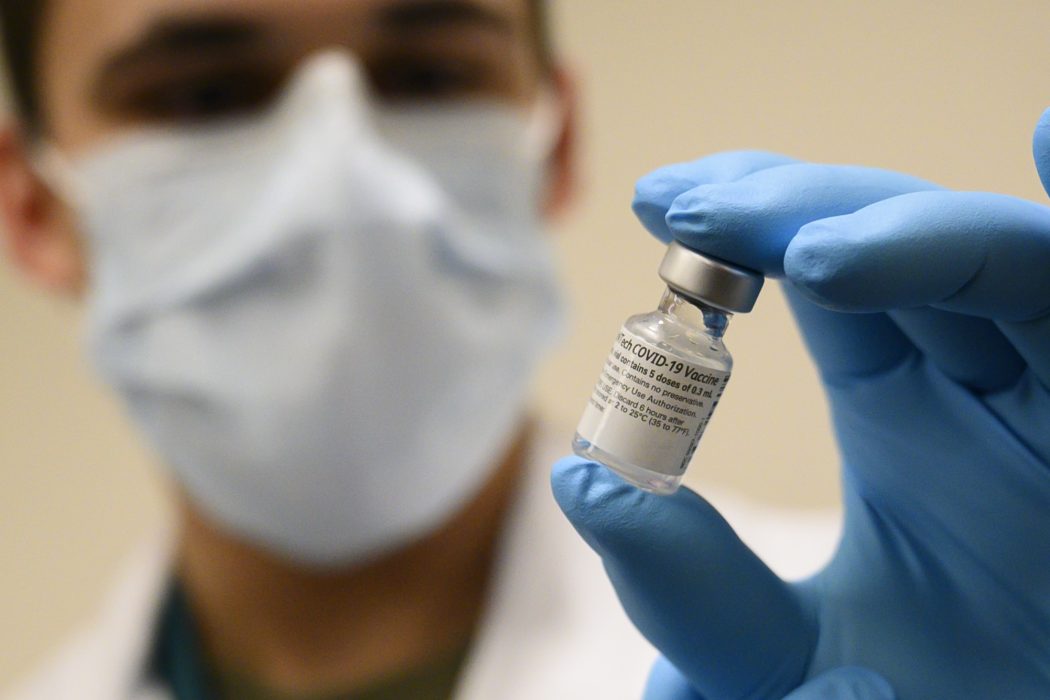March 11th, 2020 marked the pivotal day when the World Health Organization officially declared COVID-19 a pandemic, an announcement that materialized only a few short months after the first reported cases in Wuhan, China. Two days later, the Trump administration declared the virus a national emergency, enabling access to billions of dollars in federal funding intended to combat the spread of the disease. At that time, no one knew what to expect. As with other matters, the nation was split on the solemnity of the existential threat posed by the novel coronavirus. Despite public health efforts such as social distancing and stay-at-home orders, by May 28th, COVID-19 related deaths had surpassed 100,000 in the US [1]; these were truly tragic and unprecedented times.
According to the American Journal of Managed Care, the year 2020 ended with over 20 million cases and more than 346,000 deaths in the US alone [2]. While this all may seem like doom and gloom, we have not entered the new year empty-handed. For many, if not most, the acronym “mRNA” held little to no meaning or relevance prior to July 27th, when Pfizer/BioNTech and Moderna began phase 3 clinical trials on their respective mRNA-based COVID-19 vaccines, BNT162b2 and mRNA-1273. As reported by GoogleTrends, the term “mRNA” reached its peak search interest between the dates of December 13th-19th since 2004, which is presumably the year when Google began to collect such data. This should not come as a surprise as both BNT162b2 and mRNA-1273 received emergency use authorization issued by the FDA on December 11th and 18th, respectively.
Clearly, the people are curious and probably a bit concerned, which is understandable. So then, let’s talk mRNA vaccines.
Per the central dogma of molecular biology, mRNA serves as the middleman between DNA and its translation into proteins that perform the functions of all cells. The foundation of mRNA as a vaccine platform rests on the ability to introduce mRNA that codes for an antigen of interest into human cells and have the host-cell machinery produce the antigen which will then generate an immune response leading to artificially acquired active immunity. The host does not develop a productive infection since other proteins necessary for the virus (in the case of COVID-19) to be pathogenic are not coded in the mRNA molecule that is administered. Therefore, immunity to the offending pathogen is achieved without the risks associated with natural infection. Additionally, the theoretical risk from being exposed to exogenous, foreign mRNA is low since mRNA is non-replicative, incapable of integrating into the genome, and metabolically decaying in a matter of days [3].
The simplicity and elegance of the mechanism behind mRNA vaccines have left many wondering why this technology is making its debut now. The truth is that the research that has permitted companies like Pfizer, BioNTech, and Moderna to use the mRNA platform is anything but new.
As a transient and notoriously unstable carrier of genetic information, the use of mRNA as a therapeutic tool has provoked researchers for decades. In fact, the idea to utilize mRNA as a therapeutic was first suggested by Malone et al. in 1989, after successfully demonstrating their ability to transfect RNA into human cells [4]. Five years later, mRNA was advocated specifically for use in vaccines against emerging infectious agents [5], such as COVID-19. In 2010, a literature review examined information from preclinical and clinical studies on such vaccines and compared them to more conventional approaches, suggesting efficacy resemblant of live attenuated vaccines with the safety of killed or subunit vaccines [6].
More recently, a 2017 article published in The Lancet reported the results of the first human study of a prophylactic mRNA vaccine against the rabies virus. In this proof-of-concept study, the decision to utilize mRNA coding for the rabies virus glycoprotein as the model antigen was made due to established serological correlates of protection (guidelines established from other licensed rabies vaccines) as well as the guaranteed fatality of an untreated rabies infection. This allowed the researchers to evaluate the immunogenicity and safety of the mRNA vaccine in a population not already primed by previous exposure, thereby eliminating possible confounders. This phase 1 clinical trial (ClinicalTrials.gov Identifier: NCT02241135) conducted in Germany showed that most participants reported local reactions of mild to moderate severity, however, all were self-resolving and dose-dependent [7]. Additionally, the only three serious adverse events, out of 101 participants with 306 doses, which included a case of Bell’s palsy, a nasal septum deviation, and a campylobacter infection, were considered to be likely unrelated to the vaccine and resolved without sequelae. Lastly, one case of autoimmune thyroiditis that was reported a year after the last dose fell in line with the frequency of this disease amongst the general population, ergo discounting causality. In conclusion, the findings of this study showed consistency between the trial vaccine and other conventional vaccines in regard to stimulation of the immune system and safety.
If the mRNA vaccine and conventional vaccines share similar efficacy and safety profiles, why use the mRNA vaccine? The answer is simple: time and money.
As stated in a review by Pardi et al., the major obstacle in the development of vaccines against novel viruses is not the effectiveness of conventional approaches, rather the need for rapid development and mass deployment [8]. This is precisely where the mRNA vaccine excels. mRNA is synthesized via in vitro transcription reactions using a DNA template, recombinant enzymes, and ribonucleotide triphosphates and can be performed in small GMP (good manufacturing practices) facilities. Unlike the more time-consuming production of whole microbe, live attenuated, and subunit vaccines, this process is also easily standardized to manufacture any desired antigen, allowing for a rapid response necessary for the suppression or prevention of emergent infectious diseases [9]. Additionally, mRNA synthesis reactions are highly productive, making mRNA vaccines relatively cost-effective [8]. For these reasons, mRNA vaccines may be particularly useful for exigent situations, such as the COVID-19 pandemic.
On December 10th, Pfizer and BioNTech published safety and efficacy data from their phase 3 clinical trial in the New England Journal of Medicine (NEJM). In this study, 43,548 participants underwent randomization and 43,448 received injections: 21,720 of which received the BNT162b2 vaccine while the other 21,728 received placebo. BNT162b2 was 95% effective in preventing COVID-19 infection and showed a safety profile characterized by very transient, mild-to-moderate pain at the injection site and occasional fatigue and headache [10]. Any serious adverse events were rare and shared similar frequencies amongst the vaccine and placebo groups.
Shortly thereafter on December 30th, Moderna published safety and efficacy data from their phase 3 clinical trial in NEJM with very similar results. Here, 30,420 participants were enrolled, and half received the mRNA-1273 vaccine while the other half received placebo. mRNA-1273 demonstrated 94.1% efficacy in prevention of illness with COVID-19, maintaining only moderate and transient local and systemic adverse reactions [11]. As was the case with BNT162b2, serious adverse events in response to mRNA-1273 vaccination were very rare and shared similar incidence between the two test groups.
In either study, no serious safety concerns were identified. While the assessment for long-term safety of these vaccines is a primary concern for the public, ethical and practical barriers prevent following placebo groups for an extended period of time without offering immunization, given the auspicious results of both vaccines [12]. Nevertheless, ongoing phase 3 and eventual phase 4 clinical data will elucidate the long-term efficacy and safety of these vaccines which have shown much promise thus far.
As quoted by the American author Napoleon Hill, “every adversity, every failure and every heartache carries with it the seed of an equivalent or a greater benefit.” It is fair to say that the year 2020 brought tremendous adversity, failure, and heartache to all who’ve been affected either directly or indirectly by COVID-19. However, the suffering has not been in vain. In one year’s time, we have witnessed our communities, government, industries, and other components of society including academia come together to pioneer an innovative solution to reduce the loss of life and protect the physical, social, and economic well-being of our nation.
- Centers for Disease Control and Prevention. United States Coronavirus (COVD-19) Death Toll Surpasses 100,000. 2020 [cited 2021 January 2, 2021]; Available from: https://www.cdc.gov/media/releases/2020/s0528-coronavirus-death-toll.html.
- American Journal of Managed Care. A Timeline of COVID-19 Developments in 2020. 2021 [cited 2021 January 2, 2021]; Available from: https://www.ajmc.com/view/a-timeline-of-covid19-developments-in-2020.
- Probst, J., et al., Spontaneous cellular uptake of exogenous messenger RNA in vivo is nucleic acid-specific, saturable and ion dependent. Gene Ther, 2007. 14(15): p. 1175-80.
- Malone, R.W., P.L. Felgner, and I.M. Verma, Cationic liposome-mediated RNA transfection. Proc Natl Acad Sci U S A, 1989. 86(16): p. 6077-81.
- Hilleman, M.R., Recombinant vector vaccines in vaccinology. Dev Biol Stand, 1994. 82: p. 3-20.
- Liu, M.A., Immunologic basis of vaccine vectors. Immunity, 2010. 33(4): p. 504-15.
- Alberer, M., et al., Safety and immunogenicity of a mRNA rabies vaccine in healthy adults: an open-label, non-randomised, prospective, first-in-human phase 1 clinical trial. Lancet, 2017. 390(10101): p. 1511-1520.
- Pardi, N., et al., mRNA vaccines – a new era in vaccinology. Nat Rev Drug Discov, 2018. 17(4): p. 261-279.
- Zhang, C., et al., Advances in mRNA Vaccines for Infectious Diseases. Front Immunol, 2019. 10: p. 594.
- Polack, F.P., et al., Safety and Efficacy of the BNT162b2 mRNA Covid-19 Vaccine. N Engl J Med, 2020. 383(27): p. 2603-2615.
- Baden, L.R., et al., Efficacy and Safety of the mRNA-1273 SARS-CoV-2 Vaccine. N Engl J Med, 2020.
- Rid, A., M. Lipsitch, and F.G. Miller, The Ethics of Continuing Placebo in SARS-CoV-2 Vaccine Trials. JAMA, 2020.
Ankedo Warda is a member of The University of Arizona College of Medicine - Phoenix, Class of 2024. He graduated with his BS in Exercise, Health and Wellness at Arizona State University before earning his MMS (Master in Medical Studies) at The University of Arizona College of Medicine - Phoenix as part of the Pathway Scholars Class of 2020. Ankedo is interested in the fields of emergency medicine and orthopedic surgery. During leisure, Ankedo enjoys spending time with his family, weight-training and drawing.


